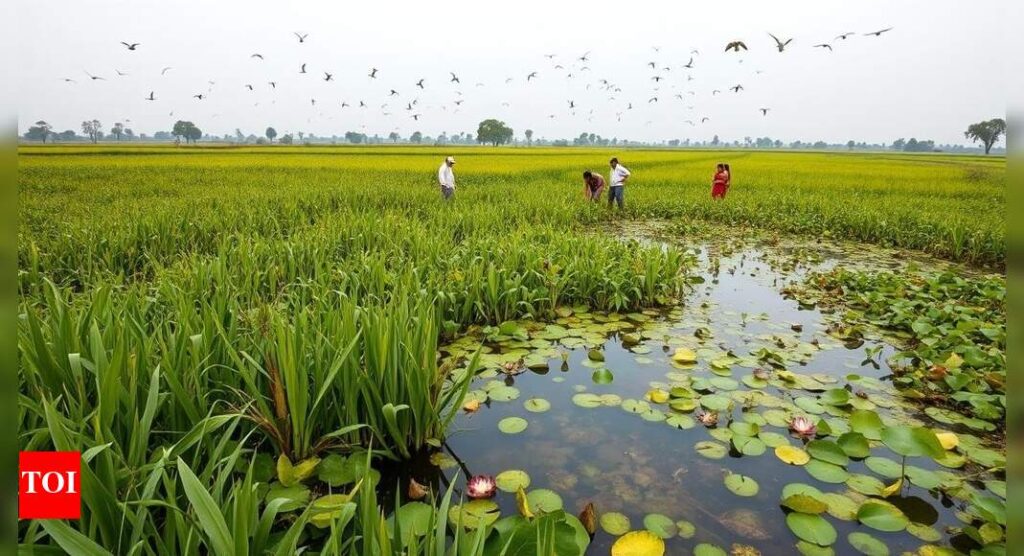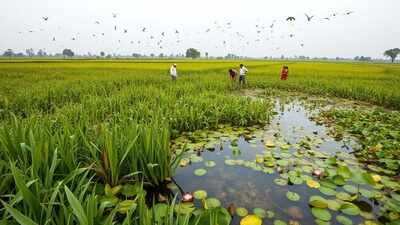India showcases its wetland conservation model at COP15, cites its achievements

NEW DELHI: India has showcased the country’s wetland conservation model at the ongoing 15th Conference of the Parties (COP15) to the Ramsar Convention on Wetlands at Victoria Falls in Zimbabwe, highlighting how it has rejuvenated over 68,827 small wetlands with people’s participation and technological interventions, including use of advanced GIS-based mapping, under dedicated schemes in just one year.The ‘Mission Sahbhagita‘, launched in 2022, to promote an “all of society” approach to wetlands conservation and the ‘Amrit Sarovar’ scheme, launched to rejuvenate and develop 50,000 small wetlands (75 wetlands in each district), got special mention during the country’s presentation.It was highlighted that 68,827 wetlands were rejuvenated and developed within one year. Financing for the exercise happened in convergence with ongoing schemes. It was shared that mapping of wetlands using advanced satellite imaging techniques, covering wetlands of up to 0.1 hectare, and physical boundary delineation are being done for inventory targeted conservation and management.At the conference, India last week invited all countries to mainstream sustainable lifestyles into their policies and practices for effective management of wetlands and their conservation. Articulating India’s stand and highlighting the country’s contribution to global wetlands conservation, environment minister Bhupender Yadav said the country has 91 Ramsar Sites (spread over 1.36 million hectares). This is the largest network in Asia and the third largest globally.He said, “Over the past decade, we have expanded this network by 250%. For the first time, two Indian cities — Udaipur and Indore — have been accredited as wetland cities, showing our commitment to urban wetlands”.A presentation was made at COP15 by the principal chief conservator of forests (Wildlife) and chief wildlife warden of Haryana, Vivek Saxena, with special focus on Sultanpur National Park (Gurgaon) and Bhindawas Bird Sanctuary (Jhajjar), both internationally designated Ramsar sites in the state, which exemplify ecosystem-based and community-led wetland conservation.The international convention on wetlands, adopted in 1971 in the Iranian city of Ramsar, provides a framework for the conservation and wise use of wetlands and their resources across 172-member countries, including India.








